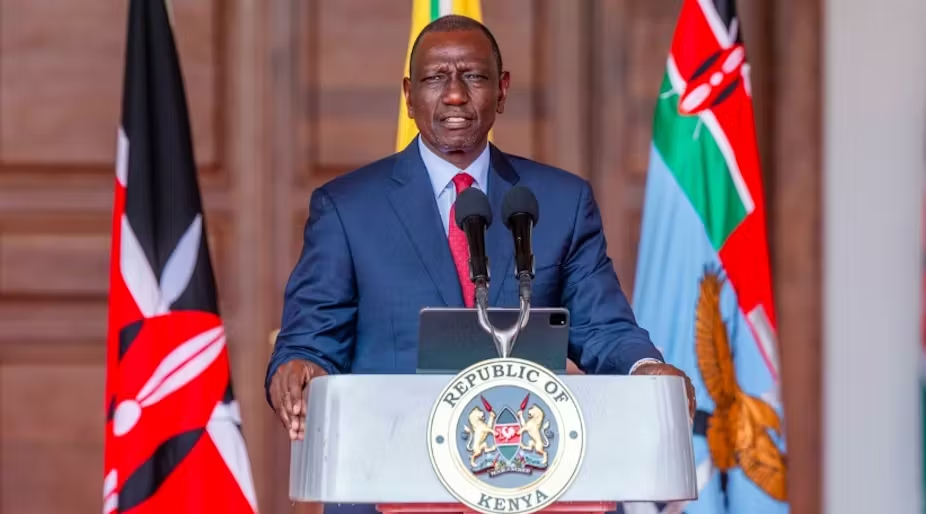
Assuming the presidency in any nation brings its own set of challenges and opportunities. For President William Ruto, who took office in Kenya in September 2022, the expectations were exceptionally high. His campaign under the United Democratic Alliance (UDA) focused on ambitious socio-economic reforms to address ordinary Kenyans’ struggles. The UDA manifesto promised expanded cash transfer programs for vulnerable populations, universal health coverage to reduce healthcare costs, and accessible credit for small and medium enterprises (SMEs) to stimulate economic growth and create jobs for the youth.
In addition, President Ruto pledged to streamline regulatory processes, reduce bureaucratic obstacles for entrepreneurs, and improve agricultural productivity through subsidies and modern farming techniques. Plans for infrastructure expansion, including roads and public utilities, and measures to increase transparency in public services were also prioritized. His administration emphasized combating corruption, updating the public on progress, and utilizing various media platforms to foster a sense of collective ownership.
A Complex Economic Inheritance
Despite the ambitious agenda, President Ruto faced an economy under strain. Kenya’s public debt had soared over the past decade, standing at approximately KSh 7.17 trillion by the end of President Uhuru Kenyatta’s term. Reports from the International Monetary Fund (IMF) and the World Bank highlighted a precarious economic situation, with the IMF’s Fourth Review under the Extended Fund Facility (EFF) and Extended Credit Facility (ECF) programs, released in December 2022, underscoring the need for fiscal discipline.
Inflationary pressures and a weakened job market added to the challenges. The World Bank’s December 2022 Kenya Economic Update noted that inflation had breached the Central Bank’s target, prompting tighter monetary policy. The pandemic’s effects on employment, particularly among youth, further highlighted the necessity of economic recovery. External factors such as volatile global markets and limited access to international capital also painted a challenging economic landscape. The administration faced the daunting task of managing Kenya’s fiscal health while implementing reform policies to spur economic growth.
Public Discontent and Gradual Reform
While Ruto’s administration initially inspired optimism, rising living costs and delays in visible economic improvements have led to public dissatisfaction. Protests against tax hikes and government spending reveal an underlying impatience for change. However, implementing structural reforms requires considerable time before benefits reach the public. Initiatives to reduce debt, combat corruption, and revive economic activity entail lengthy legislative processes, resource allocation, and infrastructure development stretching over the years.
Adding to the complexity, decisions from prior administrations, including debt obligations and entrenched bureaucratic systems, affect the current government’s efforts. Such factors highlight the need for realistic public expectations regarding the gradual nature of change.
International Influence on Domestic Policy
Kenya’s economic policy is shaped not only by domestic priorities but also by international financial institutions. In November 2024, the IMF granted Kenya access to $606 million as part of a more extensive $3.6 billion program, contingent upon fiscal reforms and enhanced transparency. Balancing these external requirements with national priorities is a delicate task for the administration, as fiscal obligations necessitate reform while Kenyans demand relief from economic strain.
A Legacy of Economic Transformation: Lessons from President Kibaki
President Ruto’s economic aspirations parallel former President Mwai Kibaki, whose administration revitalized Kenya’s economy through infrastructure and economic reforms. While Kibaki’s tenure began with economic challenges and corruption concerns, by 2007, GDP growth had reached 7%. Ruto’s administration could draw from Kibaki’s experience, recognizing that tangible economic reform demands strategic planning and sustained governance.
Addressing Corruption: The Test of Public Trust
Corruption scandals have continued to plague Kenya’s public sector, dampening public trust in the government’s commitment to transparency. In 2023, allegations of mismanagement involving government tenders, including a KSh 3.7 billion mosquito net supply contract and a KSh 10.2 billion fertilizer procurement, underscored deep-seated issues. Other controversies involved vanishing stockpiles of sugar valued at KSh 20 million and questionable oil import deals, sparking public outcry.
President Ruto’s administration has prioritized anti-corruption measures, including empowering the Ethics and Anti-Corruption Commission (EACC) and ensuring transparent procurement processes to restore faith. Public oversight and collaboration with civil society are also encouraged to monitor government activities and improve accountability. Time will tell how serious his administration is in this matter.
Delivering on Promises: Key Initiatives and Reforms
President Ruto has launched initiatives aimed at fulfilling his promises to Kenyans. His “bottom-up” economic model inspired the creation of the Hustler Fund, a KSh 54.9 billion initiative targeting over 21 million Kenyans to promote entrepreneurship. His administration has reduced the fiscal deficit to address the national debt, showcasing a commitment to fiscal prudence. In agriculture, subsidizing fertilizer prices from KSh 6,500 to KSh 2,500 has helped farmers and boosted maize production, which rose 38.9% in 2023, enhancing food security.
Reforms in education, including hiring 56,000 new teachers and refining the Competency-Based Curriculum (CBC), aim to improve educational quality. Housing, too, has seen development, with 94,128 units delivered, a 1,061% increase from previous years. Additionally, the administration has launched a nationwide tree-planting campaign to promote environmental sustainability.
Challenges and the Path Forward
President Ruto’s administration must maintain a balanced approach to navigate Kenya’s economic and social challenges, addressing public expectations with strategic reforms. The recent impeachment of Deputy President Rigathi Gachagua and the subsequent swearing-in of Kithure Kindiki reflect the administration’s capacity for swift action, a trait the public hopes will translate into effective policy implementation.
Managing Public Perception and Engagement
To regain public trust, the administration must address concerns over high taxes and refrain from additional hikes, as proposed in the 2023 and 2024 Finance Bills, which have met with strong opposition. President Ruto should also limit international engagements to focus on domestic issues, addressing perceptions that foreign travel detracts from attention to Kenya’s economic concerns.
The administration must work collaboratively with the judiciary to reduce friction and uphold the rule of law. Respect for parliamentary autonomy and encouraging public participation in legislative processes demonstrate a commitment to democratic principles.
Strategic Recommendations for Sustained Governance
Moving forward, President Ruto’s administration could consider the following strategies:
- Focus on Visible, Short-Term Policies: By implementing policies with tangible short-term impacts, the government can build public confidence to foster change.
- Transparent Communication: Regular, clear updates on policy decisions, challenges, and progress will help manage public expectations and establish credibility.
- Institutional Collaboration: Involving opposition parties, civil society, and community leaders can foster a sense of collective ownership and ease societal tensions.
- Strengthening Public Institutions: Enhancing institutional integrity and service delivery can combat corruption, fostering public confidence in the government’s commitment to reform.
Transitioning from the National Hospital Insurance Fund (NHIF) to the Social Health Authority (SHA) poses additional challenges in healthcare. Investing in facility upgrades, simplifying registration, ensuring transparent management, and conducting regular audits will be vital in building a reliable and accessible healthcare system.
Balancing Efficiency with Deliberation and the Road to 2027
President Ruto’s administration has demonstrated a capacity for decisive action, yet fulfilling Kenyans’ expectations will require sustained, thoughtful governance. The upcoming 2027 general elections loom with the promise and challenge of continuity or change. For Ruto, a second term could allow for the continuity of policies and the maturation of ongoing projects, potentially leading to more substantial socio-economic improvements. Key initiatives, such as the Hustler Fund and agricultural reforms, could deliver profound long-term benefits if given sufficient time to evolve. However, achieving these outcomes requires balancing policy ambition and responsiveness to the public’s needs.
The path to re-election hinges on the administration’s ability to transform public skepticism into support, especially among young voters, who comprise a significant portion of Kenya’s population. Meeting the high expectations of these groups involves demonstrating that his administration’s policies are improving everyday lives. Efforts to stabilize debt, address corruption, and boost employment opportunities will be vital to securing the confidence of a public eager for genuine progress. Voter sentiment in 2027 will likely be shaped by Ruto’s achievements and his responsiveness to immediate challenges, such as inflation, housing shortages, and unemployment.
Sustained public engagement will be essential as President Ruto seeks re-election. Transparent governance—through regular, honest communication about successes and challenges—will help build public trust and solidify his administration’s image as a reliable steward of Kenya’s future. In addition, adaptive policymaking, where policies are adjusted in response to public feedback and changing socio-economic conditions, will be crucial in fostering a government seen as attuned to the realities of Kenyan society.
As Ruto’s administration looks to its future, investing in enduring institutional reforms will be critical to cementing a legacy that can outlast his presidency. By strengthening public institutions, fostering accountability, and encouraging civic participation, Ruto can create a foundation for long-term stability and growth. This forward-looking approach can ensure that even if economic challenges persist, the structures in place are resilient and capable of managing future crises.
If President Ruto can deliver on his promises and visibly improve living standards across Kenya, his administration will have a strong case for re-election in 2027. However, the road ahead is complex, with many challenges requiring immediate action and strategic patience. Navigating these competing demands with pragmatism, integrity, and transparency will be critical for Ruto as he seeks to retain the confidence of Kenyans and guide the nation toward a more prosperous, stable future.
